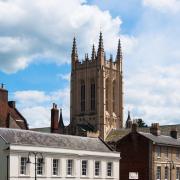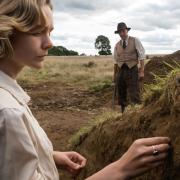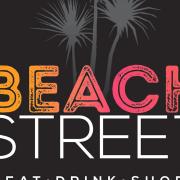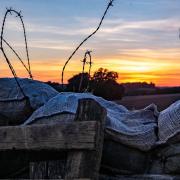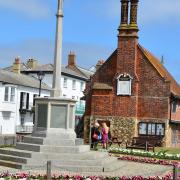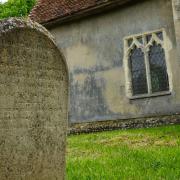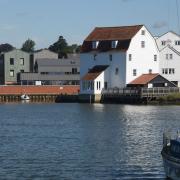Iconic Snape Maltings is many things to many people, so news of its sale to Aldeburgh Music raised eyebrows and a few questions about its future. Linda Duffin got some exciting answers from chief executive Roger Wright

“Welcome to The Best Exotic Marigold Hotels, Numbers Two and Three,” quips Roger Wright with an airy wave that takes in some 50 thousand square feet of derelict buildings.
The chief executive of Aldeburgh Music is showing me around the undeveloped parts of Snape Maltings, which the charity has just bought from the Gooderham family for an undisclosed sum.
The family had owned the site, set among reed beds on the River Alde under wide Suffolk skies, since 1965 and it came as a bombshell when Johnny and Alesha Gooderham announced at the end of March that they were selling up and moving to Alesha’s native Australia.
“Master plan? There is no master plan. It’s not as though I was sitting here stroking a white cat and saying ‘Good evening, Mr Bond’,” says Roger Wright in his best Blofeld accent. “I didn’t know when I said yes to coming here that really soon after my arrival [last September] there was going to be this thrilling and unexpected opportunity to acquire the whole site.”

Roger had spent the past 16 years running BBC Radio 3, including eight years in charge of the BBC Proms and previously had been vice-president of Deutsche Grammophon, so his classical music credentials were impeccable. Retailing, not so much. In addition to the yet-to-be-developed buildings, Aldeburgh Music has acquired nine independent shops and galleries and a tea shop and restaurant as well as the freehold of the entire site, making it the landlord of the Maltings’ residential properties too. Overnight, it doubled its workforce and doubled its turnover.
The full scale of the investment will be made public when its annual accounts are published in October, but it is clearly a chunky amount of money. The Arts Council put up two million pounds, an Aldeburgh Music board member made a sizeable donation, and the rest came from the charity’s rainy day endowment fund.
“If you think about what that investment might be returning if invested in the market, compared to investing in Snape Maltings, then it’s a good business decision,” says Roger.
The Maltings is a profitable concern, but the clincher was the fear that someone else could buy the site and develop it in a way that was at odds with Aldeburgh Music’s role as envisioned by the composer, Benjamin Britten – that of creative campus for the arts with capacity to expand.
“So there were three reasons why it was important to us – to secure and protect the site, to give us room to grow and to give us, potentially, a new income stream as well.” Future plans are still fluid. “It was really important to us in going through the process of acquisition that we didn’t get diverted or distracted or too much encouraged by artists’ impressions of what it might look like with a guitar being strummed amongst the reed beds,” Roger says. “Because we haven’t got any money to develop it yet, we can take stock, talk to as many people as possible and think about what the world will be like in five or six years. We’ve got to be careful not to galumph into making assumptions without seeing how they will affect both the local community and the general ecology of the arts.” Development capital could come from a combination of public funding, private giving and commercial partnerships.
What they do want to do is to tell Snape’s story “from malt to music”, as Roger puts it, and planning permission has already been granted for a heritage centre. They want to develop some of the derelict buildings as accommodation for visiting musicians. They also want to integrate the different functions of the site more closely, to get concert-goers spending more time there and to get other visitors involved in the music. “About half a million people come here every year. They come for its natural beauty, for retail therapy, for a coffee, for a walk, for a cycle ride, and that needs to stay exactly as it is,” Roger says.
“And people come for concerts and master classes and workshops and recitals and opera – that also should stay. An awful lot of people we work with in Aldeburgh Music come here, not quite on retreat, but to work privately in our beautiful spaces, to have that sense of focus and inspiration. That can’t go on in the public glare. But there is a way of opening up our buildings more, to get people into the concert hall, which is one of the great concert halls in the world in the most spectacular setting. So over Christmas we’ll have a series of activities – a carol sing-along in the Britten Studio, some Bach Christmas music, the John Wilson Orchestra, but also the opportunity to get some music out and about at the Christmas market.”
The Malting’s interim retail director, Beverley Aspinall, shares that vision. In the past, she says, concert-goers might have come 20 minutes beforehand for a quick drink, listened to the music and gone home. Now they can come earlier and ‘do a Glyndebourne’. Perhaps more than that, as Beverley’s team works on dovetailing the catering with the culture.
“It makes an amazing day out to come here for a coffee in the morning, have a wander round the shops, have lunch, go for a walk amongst the reeds, maybe go to the coast and walk along the beach, come back for an evening concert – in a fantastic, beautiful, heritage site.” There is also scope, she feels, for some careful additions to Snape Malting’s retail scene – perhaps beauty products, a spa, a menswear shop.
Beverley also arrived at Snape with an impressive cv. She was managing director of Peter Jones department store in Sloane Square and oversaw its £100 million overhaul. She went on to head up Fortnum and Mason, where she masterminded a similar redevelopment, and for two years worked on the Bond Street regeneration as retail consultant. Then, last Christmas, she got a phone call from Aldeburgh Music. She was there before the sale went through to help with due diligence and has now head-hunted a full-time successor, Kate Morgan from fashion retailer Hobbs.
“Both Johnny and Alesha were deeply involved in the business day-to-day. When a business is family owned there’s security for staff about the long-term future. My role has been about reassurance, to make sure everyone knows Aldeburgh Music’s intentions.” She says the staff were thrilled when they heard Aldeburgh Music was the new owner because they trusted them and knew they had a long-term view about what’s right for the site for the next five years, 10 years, 50 years.
“Had it been bought by a private equity company – which could have happened – they might have developed it and then got out in two or three years. Well, that’s not going to happen with this organisation.” n




